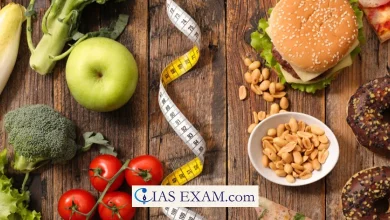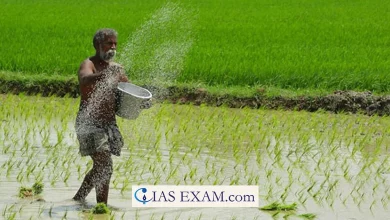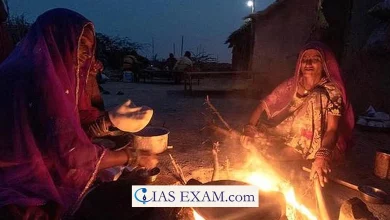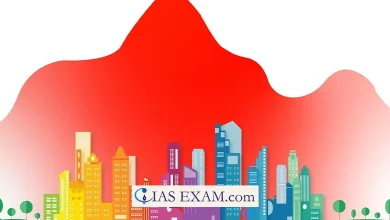Daily Current Affairs for UPSC
India’s Progress in Tackling IMR, MMR and Malnutrition
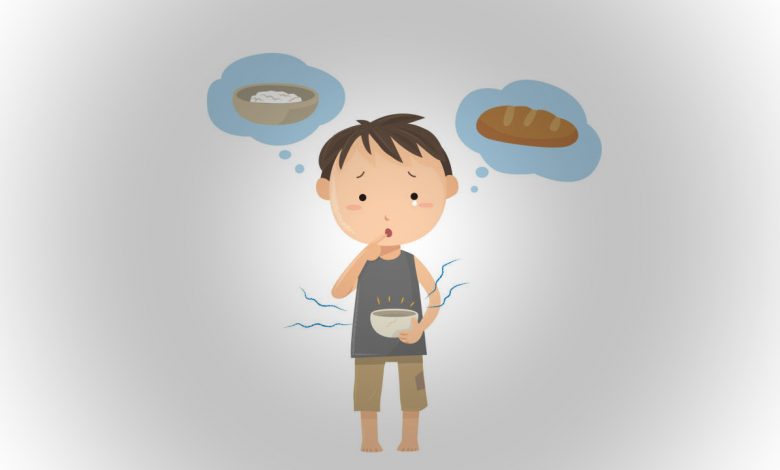
Topic- Government Policies and Interventions [GS Paper-2]
Context- The data presented by the Registrar General of India (RGI) presents a significant gain in momentum of the pace of decline in India’s maternal and infant mortality rates (MMR and IMR) post-2005.
Key Highlights
Consistently Declining Trends:
- According to a special bulletin published by the office of the RGI, India’s MMR was 97 during 2018-2020 compared to 301 during 2001-03.
- The IMR has been reduced to 27 (as of 2021) compared to 58 in 2005.
- The Rural-Urban difference in this context has been narrowed.
Role of NHM and NRHM:
- As seen, for the last few years the National Rural Health Mission (NRHM) and the National Health Mission (NHM) has been a game changer for the country in terms of mortality reductions for infants and mothers.
- The NRHM was launched in the year 2005 to provide accessible and affordable healthcare through a public system of primary health care.
- NHM was launched by the government of India in the year 2013 subsuming the National Rural Health Mission (Launched in 2005) and the National Urban Health Mission (Launched in 2013).
Malnutrition
- Malnutrition is the condition which develops when the body is deprived of vitamins, minerals and other nutrients it needs to maintain healthy tissues and organ function.
- Malnutrition occurs in people particularly who are either undernourished or over nourished.
Datas of NFHS 5:
- The 5th National Family Health Survey 2019-21 states 35.5% of children under 5 are stunted, 19.3% are wasted, and 32.1% are underweight.
- Meghalaya has the highest number of stunted children i.e. 46.5%, followed by Bihar i.e. 42.9%.
- Maharashtra (25.6%) has the highest percentage of wasted children followed by Gujarat with 25.1%.
- Compared with the 4th NFHS, the prevalence of overweight or obesity has increased in most States/UTs in NFHS-5.
- At national level, it increased from 21% to 24% among women and 19% to 23% among men.
- The incidence of anaemia in under-5 children reports from 58.6 to 67%, whereas in women it’s 53.1 to 57% and in men 22.7 to 25% has worsened in all States of India.
Inefficiency of Govt. Initiatives:
- The POSHAN Abhiyaan, though innovative, is still not addressing the institutional decentralised public action challenge.
- The initiatives for nutrition have remained compartmentalised and fragmented; the institutional role of local panchayats and communities with united financial resources is still lagging.
Other Issues:
- The vicious cycle of poverty, undernutrition, diminished work capacity, low earnings and poverty poses the maximum cause of malnutrition.
- Diseases like malaria and measles precipitate acute malnutrition and aggravate the existing nutritional deficit.
- Arbitrariness and inter-state-variation in determining a household’s BPL status causes arbitrary identification of hunger.
- Negligence towards micro-nutrient deficiency that causes hidden hunger and inadequate knowledge among mothers regarding nutrition and breast-feeding.
Initiatives to Tackle Malnutrition
- POSHAN Abhiyaan: The government of India has launched the National Nutrition Mission (NNM) also known as POSHAN Abhiyaan to ensure a “Malnutrition Free India” by 2022.
- Anemia Mukt Bharat Abhiyan: Launched in 2018, the mission aims at accelerating the annual rate of decline of anaemia from 1 to 3% points.
- The National Food Security Act (NFSA), 2013: Its objective is to ensure food and nutrition security for the most vulnerables through its associated schemes and programmes, making access to food a legal right.
- Pradhan Mantri Matru Vandana Yojana (PMMVY): Under the scheme Rs.6,000 is transferred directly to the bank accounts of pregnant women for availing better facilities for their delivery.
- Integrated Child Development Services (ICDS) Scheme: The scheme was launched in 1975 and the scheme aims at providing food, preschool education, primary healthcare, immunisation, health check-up and referral services to children under 6 years of age and their mothers.
- Eat Right India and Fit India Movement are some of the other initiatives to promote healthy eating and healthy lifestyle.
Reorganisation Principles for Nutrition Success
- Vesting in grassroot level administration i.e. Gram Panchayat, Gram Sabha and other community organisations, the responsibility of education, health, nutrition, skills and diversified livelihoods.
- Operationalising village-specific planning processes with decentralised financial resources should be created.
- Assessing (a) the need for additional caregivers with capacity development to ensure household visits and (b) the intensity of monitoring needed for outcomes in nutrition.
- By encouraging diversity of local food including millets, served hot.
- It is also needed to intensify behaviour that changes communication.
- Institutionalising monthly health days at every Anganwadi centre and providing community connection and parental involvement.
- Creating a platform for adolescent girls in rural areas for empowerment and for diversified livelihoods through skills.
Registrar General of India
- The RGI was founded in 1961 under the Ministry of Home Affairs and it arranges, conducts and analyses the results of the demographic surveys of India (Census of India and Linguistic Survey of India).
- The position of Registrar is generally held by a civil servant holding the rank of Joint Secretary.
- The Office of RGI is primarily responsible for conducting;
- Housing & Population Census
- Civil Registration System (CRS)
- Sample Registration System (SRS)
- National Population Register (NPR) and
- Mother Tongue Survey
Conclusion
- Nutrition as a subject calls for a whole-of-government as well as whole-of-society approach.
- Technology can at best act as a means and monitoring too has to become local.
- Panchayats and community organisations serve as the best way forward.





.png)
